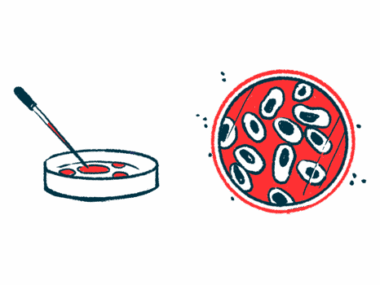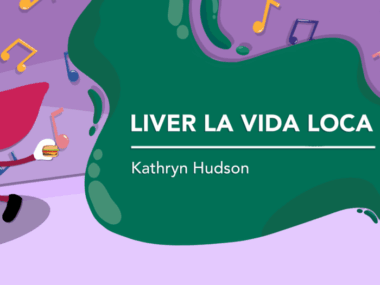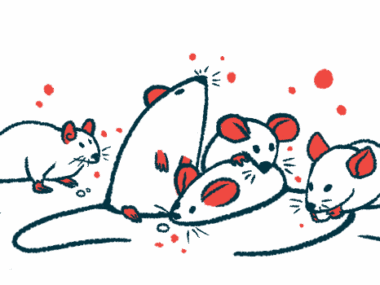Itching and scratching our way to a PFIC diagnosis
A columnist searches for answers to explain her newborn's health setbacks
Written by |

My childhood neighbor was a university lecturer. One of my earlier memories of her is when she told me, “Sophie, you aren’t nosy. You’re inquisitive, and it’s the sign of a scientific mind.” Little did I know then that my passion for science would drive not only a career in nature conservation, but also a life of advocacy for my own health and that of my family.
At 16, I began suffering from episodes of crippling pain under my ribs. It took seven trips to the emergency room before doctors diagnosed me with gallstones. The doctor described this as a surprise, as I didn’t hit the typical criteria of the “5Fs” (“fair, fat, female, fertile, and forty”).
It became a long-running joke in our family that my health was similar to that of my 94-year-old great-grandmother. During my first pregnancy in 2020, my skin became extremely itchy. After contemplating whether I wasn’t moisturizing enough, I visited a hospital.
We discovered that my bile acid levels were high, and I was diagnosed with severe intrahepatic cholestasis of pregnancy (ICP). Because of the associated risk of stillbirth, my doctors induced labor, and our bonny little daughter, Eva, was born at 37 weeks gestation.
A mum on a mission
Soon after Eva’s birth, we noticed that something wasn’t right. Within her first week, she had episodes of jaundice, diarrhea, and constant sickness. She couldn’t gain weight and was eventually classified as “failure to thrive.” She was hospitalized at 10 days old and remained there for much of her first three months.
Blood tests showed her liver enzymes were deranged, and she became increasingly thinner until her bones began to protrude. At around 3 months, Eva started taking ursodeoxycholic acid. She eventually turned a corner, steadily gaining weight as her liver levels improved.
We also realized that she had cow’s milk protein allergy, which exacerbated sickness and diarrhea. Yet as things improved, we still had no answers about what was causing her liver problems. Every test came back negative.
In December 2020, Eva returned home and bonded with her dad, who hadn’t been able to visit the hospital due to COVID-19 pandemic restrictions. I became a mum on a mission, totally focused on finding out what was hurting Eva.
I spent countless hours reading scientific journals, perusing online forums, and eventually asking in an ICP Facebook group if anyone’s baby had been born with liver problems. In response, an American nurse guided me to a few liver diseases with symptoms that were familiar in my family’s history.
I’d already booked Eva’s genetic testing appointment, and at her next doctor’s appointment I asked if they could add tests for these diseases to the list. I breathed a sigh of relief when the doctor agreed.
After Eva had the diagnostic blood test, I sat in the garden of the doctor’s office with tears streaming down my face. I was sure that Eva had one of these diseases. They felt like the answer to a lifetime of questions, the missing piece to our family’s puzzle.
The test results took a few months to come back, after which the doctor called to tell us that Eva has a rare subtype of the rare disease progressive familial intrahepatic cholestasis (PFIC). Our overwhelming emotion upon learning this was relief. We finally had answers and could move forward to seeking treatment.
My scientific mind had paid off, and it’s now a long-running joke with Eva’s doctor that we still wouldn’t have a diagnosis if it weren’t for my late-night — borderline obsessive — scrolling.
So what is PFIC? It’s a genetic disease inherited when both parents carry a faulty gene. It affects the transport of bile, a liquid that helps to digest food. In people with PFIC (and to a lesser extent, carriers of the disease), bile can’t be properly transported out of the liver, so it builds up over time. This causes liver damage, intense itching, gallstones, diarrhea, slow growth, and vitamin deficiencies that affect the whole body.
The severity of PFIC can vary greatly, with some children needing a liver transplant soon after birth and others living into adulthood before diagnosis. Doctors think Eva has a moderate form of PFIC type 3. She is going through a period of relatively good health, thriving at her nursery and keeping us on our toes with the “but why?” questions of a typical 3-year-old.
While we have no idea how long this period of relative stability will last, we’re hopeful that treatments currently in development will become available to buy her good health for as long as possible.
Although my great-grandma is no longer with us, we think she was also a carrier of PFIC, the reason our health complaints, and perhaps sense of humor, were alike! As for my health, I’m now 30 weeks pregnant, and the ICP is back. As it says in the title of this column, I’m “Itching and Scratching.”
Note: Liver Disease News is strictly a news and information website about the disease. It does not provide medical advice, diagnosis, or treatment. This content is not intended to be a substitute for professional medical advice, diagnosis, or treatment. Always seek the advice of your physician or other qualified health provider with any questions you may have regarding a medical condition. Never disregard professional medical advice or delay in seeking it because of something you have read on this website. The opinions expressed in this column are not those of Liver Disease News or its parent company, Bionews, and are intended to spark discussion about issues pertaining to liver disease.









Leave a comment
Fill in the required fields to post. Your email address will not be published.